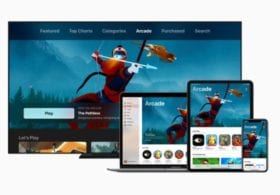
By Michael Lantz, CEO, Accedo
While the usage of mobile devices has exploded over the past ten years, television remains incredibly popular and powers the largest content industry in the world with an estimated worth of $200B annually. The holy grail of next generation connected devices is to linkthe first screen (TV) with the second screen (a mobile device). With the prospect of integrated first and second screen experiences extremely interesting right now, it’s an opportune time to explore current and likely future developments.
The vast majority of today’s mobile devices have touch screens as the main interaction method, potentially coupled with a home and menu button. From the perspective of interaction, the fundamental difference between mobiles and tablets is the size of the user interface. With a mobile you interact with the same device that you are looking at while with TV the interaction happens with a separate device, i.e. a remote control. This sets up some true limitations on the consumer experience, which depends on an interface that hasn’t evolved much over the past 20 years.
Before designing any second screen experience I firmly believe that it is necessary to examine consumer behaviour. In many cases, available technologies, rather than consumer requirements, impact the implemented use cases for applications. This means that the focus often shifts away from what is most import: getting the functionality right and intuitive for the users.
I have found that the most common complaint with a mobile application is the inability to display the content or the application on a TV screen. At the same time, the most common complaints with television service are that it is difficult to find interesting content and that it takes time to navigate the TV application, which is perceived as “clunky” when compared to the slick mobile user interface.
But in reality, most so-called second screen apps are not fully integrated. For me, an Integrated Second Screen Experience is a mobile application or service which interacts with and impacts the experience on the first screen, based on the interaction with the mobile device (i.e.using the mobile to select which content to watch). Second screen apps, which are stand alone, like (social media or program guides) would not be considered integrated second screen apps from this definition. Even if it’s possible to do much more with integrated first and second screen experiences, what consumers mainly want is to be able to discover content on their mobile device and play it on their televisions.
Today, consumers are truly excited about being in control of their TV consumption. Many industry pundits have touted second screen experiences as the next big wave in the TV industry. I see this as a huge exaggeration and mainly a “convenience innovation”, adding some value to existing use cases, but in no way indicating a fundamental change in consumer behaviour. The key element comes down to using each device for what it’s best at. Mobile and tablet devices offer intuitive discoverability, but the TV will remain the optimum screen for video viewing.
10 years from now, an Integrated Second Screen Experience will be as natural as using a remote control and it will improve the way we experience TV interactivity. (i.e. through participation TV, where an app allows the user to actually interact with the program on the first screen). This could work well with reality shows, where contestants can ask questions or vote via an app. Innovation will remain high, where the short term focus will be an intuitive connection between devices and the long term focus will be creation of new content formats. Integrated Second Screen Experiences will be the biggest user experience innovation for the world’s largest largest media industry since the introduction of the remote control. With mass market availability we will see the content production industry adapt to the new possibilities, which will revolutionize the TV user experience as we know it.
Michael Lantz is the CEO of Accedo, which he jointly founded in 2004 with Fredrik Andersson. Lantz has extensive experience in the converging telecom and media industries. Since founding Accedo, he has been driving development of innovative content offerings and applications for IPTV service providers and CE companies.
The Cynsiders column is a platform for industry leaders to reach out to their colleagues followers and the public at large. In their own words, they address breaking news, issues of the day, and the larger changes going on in the ever-evolving world of television, video and digital. Unique to cynopsis, Cynsiders lives on the cynopsis.com homepage and is promoted across the daily newsletters. We welcome readers’ comments, queries, and column ideas at [email protected]






